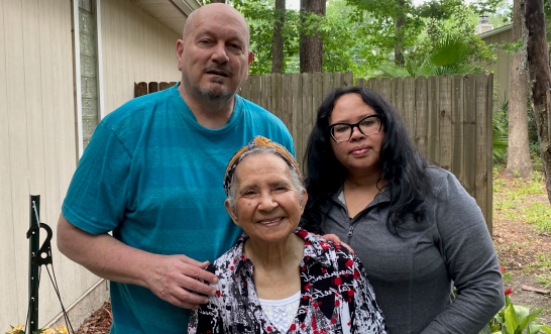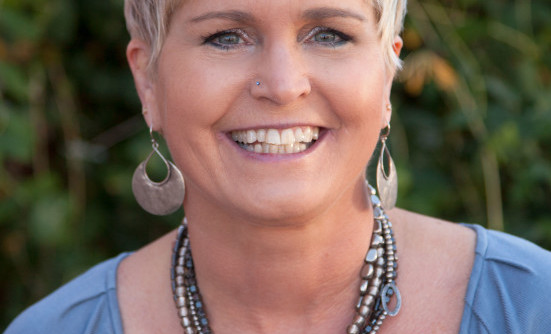Skillful doctors helped my wife, Anabel Perez Ryan, overcome a recent medical scare. On her road to recovery, however, the poor communication and confusing medical terminology used by some of these experts caused her more anxiety than a Friday the 13th horror movie.
Anabel’s emotional roller coaster finally came to an end when the uterine lining “scrapings” from a dilation and curettage (D&C) procedure (a procedure used to remove tissue from the uterus to look for cancer) showed no malignancies. The mass seen on the CT scan of her pelvis turned out to be a big benign fibroid, not uterine cancer.
Initial Worries
She had been fearful that the shadow seen on the CT scan might be uterine cancer (or endometrial cancer), the most common type of cancer that affects the female reproductive organs.1 The American Cancer Society estimates that there will be 65,620 new cases of uterine corpus cancer (the corpus is the upper part of the uterus), and 12,590 deaths will occur in the United States in 2020.1
After Anabel was told of the negative (normal) results of the CT scan, she was surprised to receive a call from a medical assistant at the office of her primary care doctor in Tallahassee, saying that they wanted to schedule a pelvic MRI. When she informed them that the gynecological oncology specialist in Tallahassee planned a D&C procedure, the primary care doctor’s office agreed that the MRI was not necessary at this time.
The primary care doctor’s office had also called to schedule the CT scan after Anabel had already had the scan done by the specialist.
A few weeks earlier, Anabel had been worried about a different form of cancer—ovarian cancer—after being seen in the emergency department. She went to the emergency department because she had worsening menopausal symptoms, including pelvic pain, abdominal swelling, and bleeding not related to menstrual periods.
The procedures she had at the emergency department included an ultrasound that showed the uterine mass, and abnormal results from a blood test called cancer antigen 125, or CA-125.2 The blood test showed that Anabel’s CA-125 levels were elevated. Naturally, she was worried that this finding might be a sign that she had ovarian cancer.
Communication Lapses
However, she later learned that CA-125 was not a reliable screening test for ovarian cancer. Instead, she was told, the test was usually used to monitor patients who have already been diagnosed with ovarian cancer. She also discovered that elevated CA-125 levels could be associated with many benign (non-cancerous) conditions, including having a uterine fibroid or fibroids. So it would have been helpful if one of the healthcare professionals in the emergency department had explained to her what the lab test was for.
In fact, Anabel’s primary care physician as well as her gynecological oncology specialist asked the same question about the emergency department findings, which was, “Why did they do the CA-125 test?”
These communication lapses have since reinforced Anabel’s routine practice of carrying copies of her lab results to all her medical appointments.
Stressful Sighs of Relief
The good news is that cancer, or cancers, have been ruled out for my wife through ultrasound, CT scan, pelvic exams, and the D&C procedure. And the repeated blood work she had, including repeated CA-125 blood tests and a human epididymis secretory protein 4 (HE4) test,3 another test related to the diagnosis of ovarian cancer, have been in the normal range.
The gynecological oncology doctor explained to Anabel that the fibroid seen on the scan was attached to the wall of her uterus, but there was no need to remove it at this point, and there was no need for a hysterectomy (removal of the uterus and cervix).
The gynecological oncology doctor explained that fibroids are non-cancerous growths that are usually not associated with an increased risk of uterine cancer. Although intestinal polyps can turn into cancer, fibroids generally do not. The doctor recommended that Anabel have a follow-up appointment and an ultrasound in 6 months.
Anabel cried when the gynecological oncology doctor hugged her. The specialist doctor had taken the time to talk to Anabel, and to explain the medical terminology in plain language, removing the mystery out of the situation and allowing Anabel to relax. All doctors should be able to do that, including those in the emergency department.
The doctors should also be talking to each other about their patients.
References
- American Cancer Society. Uterine corpus at a glance. 2020. https://cancerstatisticscenter.cancer.org/?_ga=2.259369482.1268004054.1557882589-1537911199.1557882589#!/cancer-site/Uterine%20corpus.
- Mayo Clinic. CA 125 test. February 27, 2020. www.mayoclinic.org/tests-procedures/ca-125-test/about/pac-20393295.
- Quest Diagnostics. Ovarian cancer testing: HE4, ovarian cancer monitoring. www.questdiagnostics.com/home/patients/health-test-info/cancer/ovarian-cancer/he4-monitoring.html.
Key Points
- Uterine cancer is the most common type of cancer involved in the female reproductive organs
- The American Cancer Society estimates there will be 65,620 new cases of uterine corpus cancer and 12,590 deaths in the United States in 2020
- Elevated CA-125 levels may be associated with many benign conditions, including having a uterine fibroid or fibroids, but they are not used to diagnose cancer
- Fibroids are non-cancerous growths that are usually not associated with an increased risk of uterine cancer
- Proper communication is vital in ensuring patients and doctors are on the same page when it comes to treatment and medical procedures
Patient Resources
American Cancer Society
www.cancer.org/cancer/uterinesarcoma/detection-diagnosis-staging/signs-symptoms.html
National Cancer Institute
www.cancer.gov/types/uterine
Office on Women’s Health
www.womenshealth.gov/a-z-topics/uterine-fibroids















